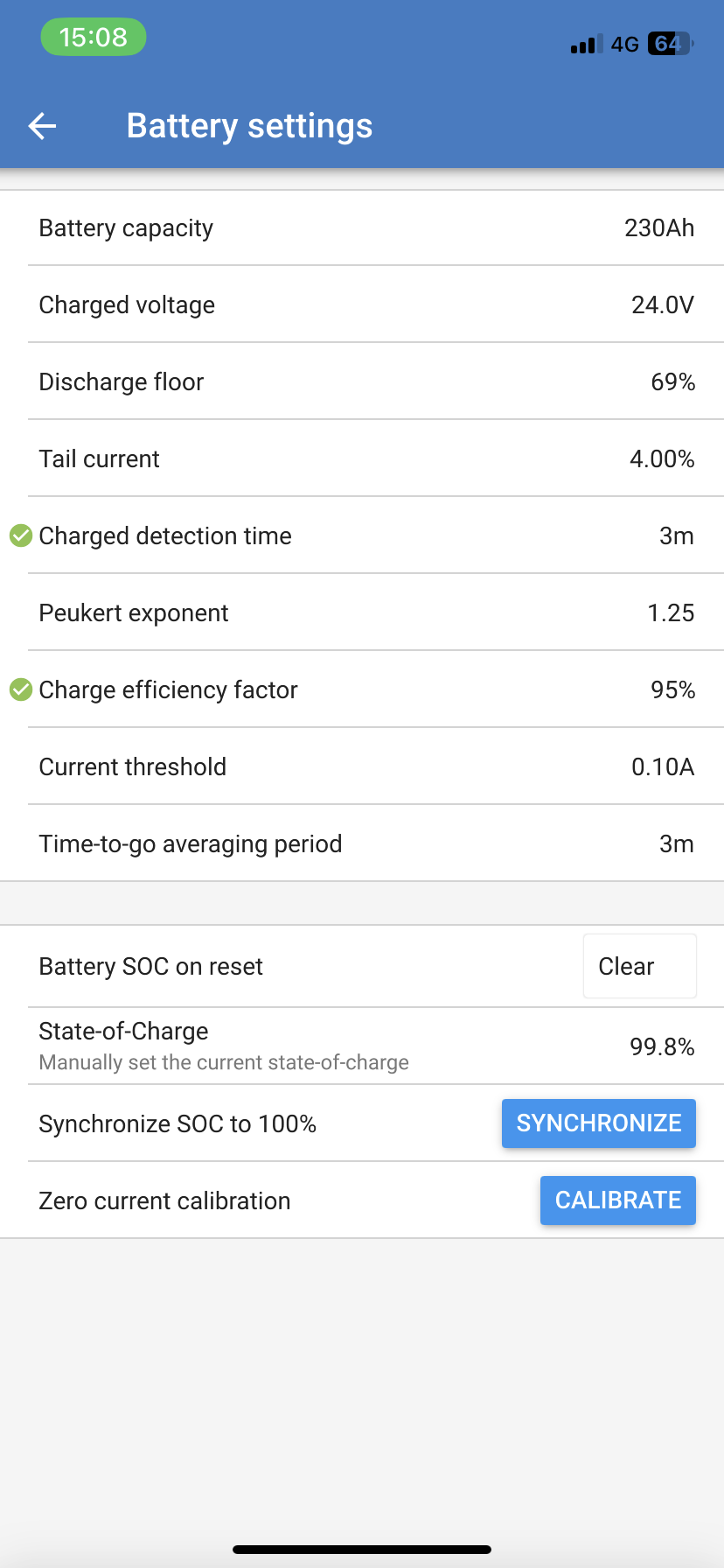Hi there people,
So I’ve been away for a few weeks and my friend has been staying in my place.
I have a Smart Shunt, a 24/800 inverter and a 100/50 MPPT.
2 x 230ah 12v lead acid batteries wired to 24v.
Despite having a discharge floor of 60% - which hasn’t been reached - the 24v batteries have been as low as 18v which tells me they are wrecked.
I woke up this morning and I’ve got a low voltage alarm and no power despite supposedly having 82% in the tank.
I don’t understand how the deepest discharge can be 77ah and take the voltage down to 18.56. Calibration error?
Any ideas what I’m doing wrong?
How can the voltage get so low without hitting a charge cycle / the discharge floor?
Many thanks…




